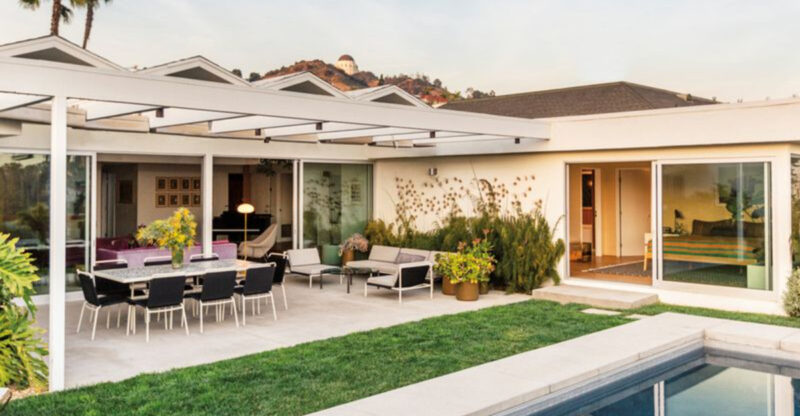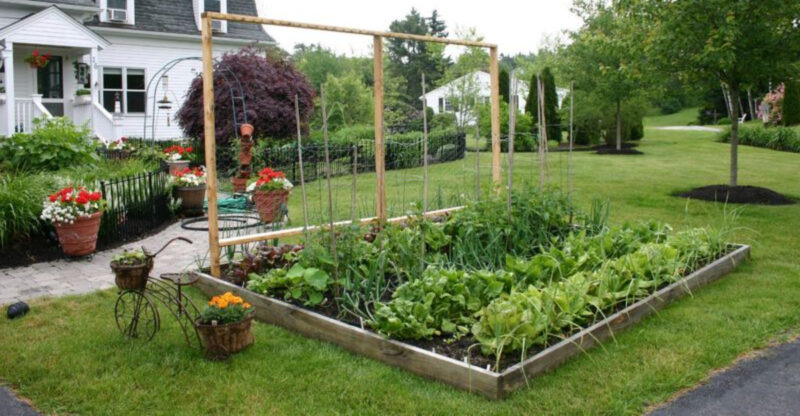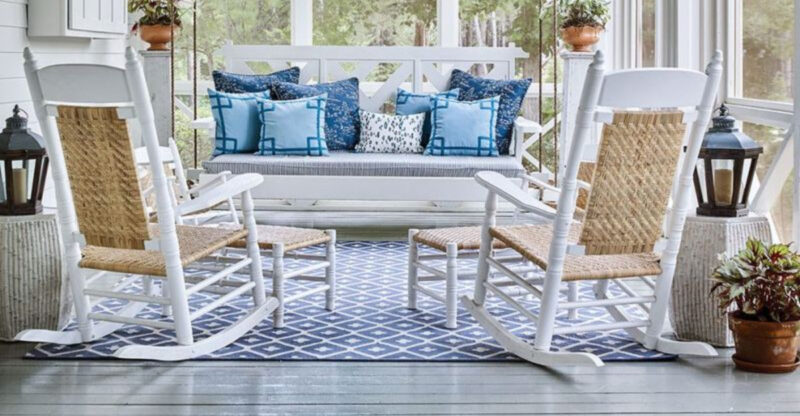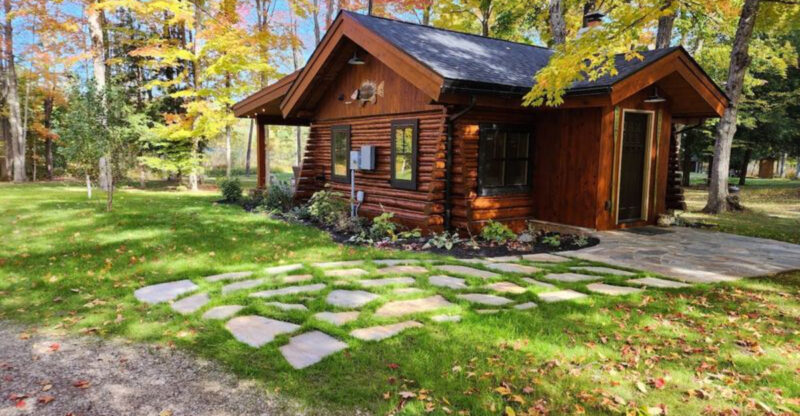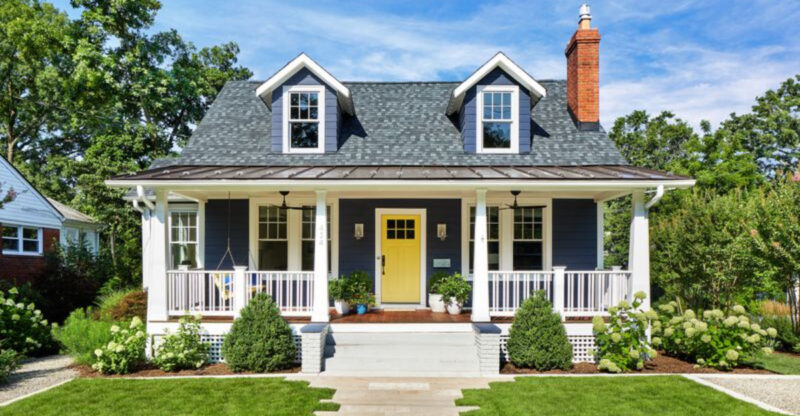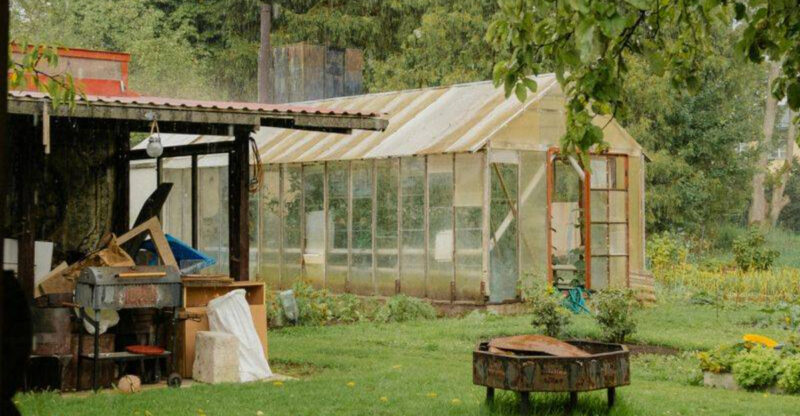These 10 Atlanta Homes Show How To Pull Off A Desert-Inspired Exterior Look
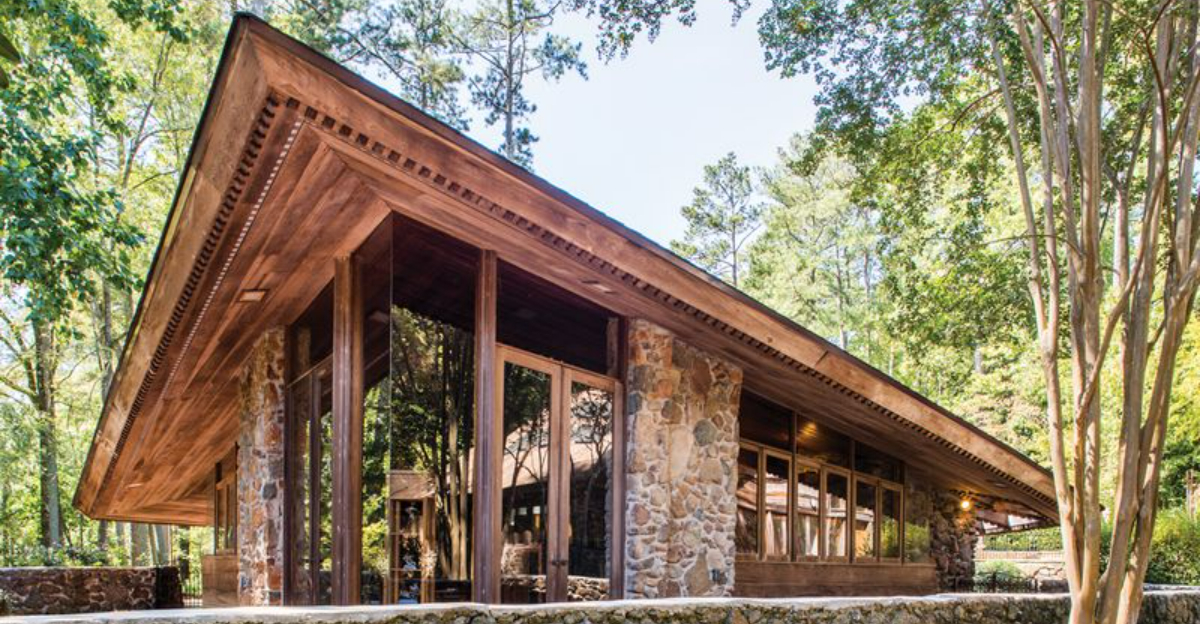
Atlanta homeowners are embracing desert-inspired exteriors, bringing Southwestern charm to Georgia’s landscape. This architectural trend combines earthy tones, drought-resistant plants, and natural materials to create striking homes that stand out in Atlanta neighborhoods.
I’ll show you how local homeowners have successfully adapted desert aesthetics to our humid climate with these stunning examples.
1. Rustic Adobe-Style Facade
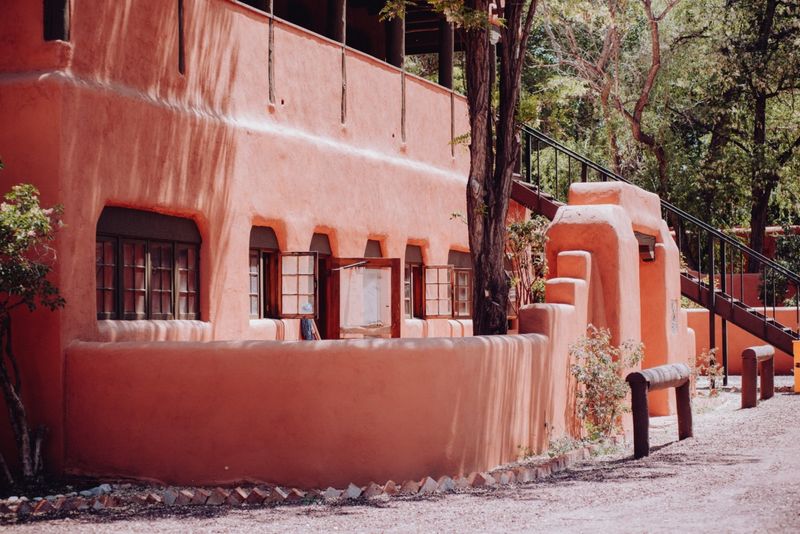
Walking past this Buckhead beauty feels like stepping into Santa Fe. The homeowners painted their traditional brick exterior with a warm terracotta wash, then added wooden beam accents that mimic traditional adobe construction.
They’ve created texture by incorporating rough stucco patches and strategically placed cacti in raised stone planters. The southwestern-inspired color palette makes this home a neighborhood standout without feeling out of place in Atlanta’s lush environment.
2. Minimalist Desert Modern
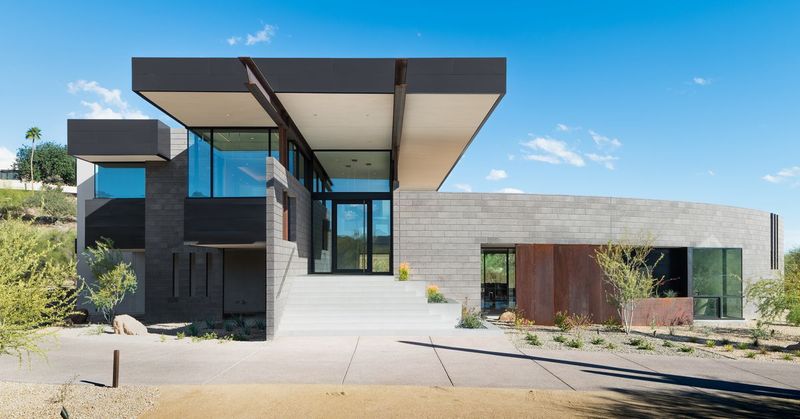
Clean lines and geometric shapes define this Midtown gem. The homeowners stripped away ornate details in favor of a sleek silhouette with flat rooflines and oversized windows that flood the interior with natural light.
Concrete elements contrast beautifully with weathered steel accents that develop a rich patina over time. What makes this home truly special is how they’ve embraced negative space, allowing the structure to breathe within its surroundings rather than competing with neighboring traditional homes.
3. Earth-Toned Color Scheme
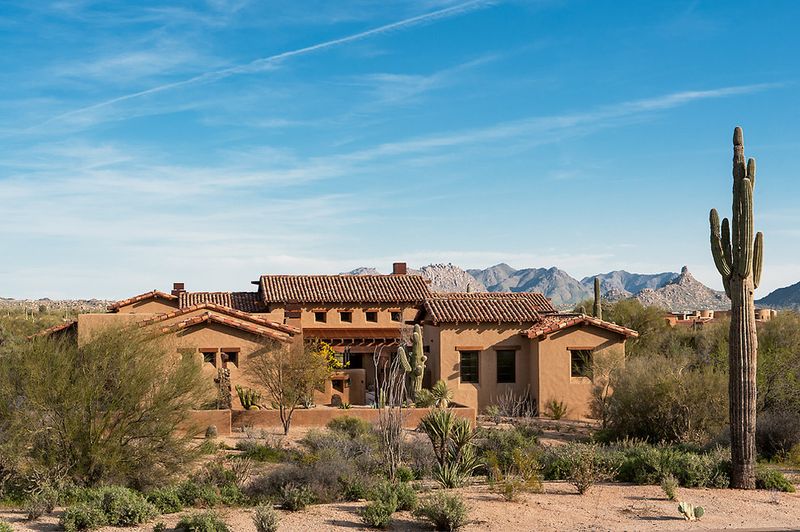
Gone are the traditional whites and grays typical of Atlanta exteriors! This Decatur ranch embraces a palette straight from the Sonoran Desert with gradient paint treatments in amber, rust, and sand tones.
The homeowners worked with a color specialist to select hues that change subtly throughout the day as sunlight shifts. Dark bronze window frames and door hardware provide striking contrast against the warm background. Even the roof shingles were carefully chosen in a complementary terracotta shade to complete the desert-inspired look.
4. Drought-Tolerant Front Yard
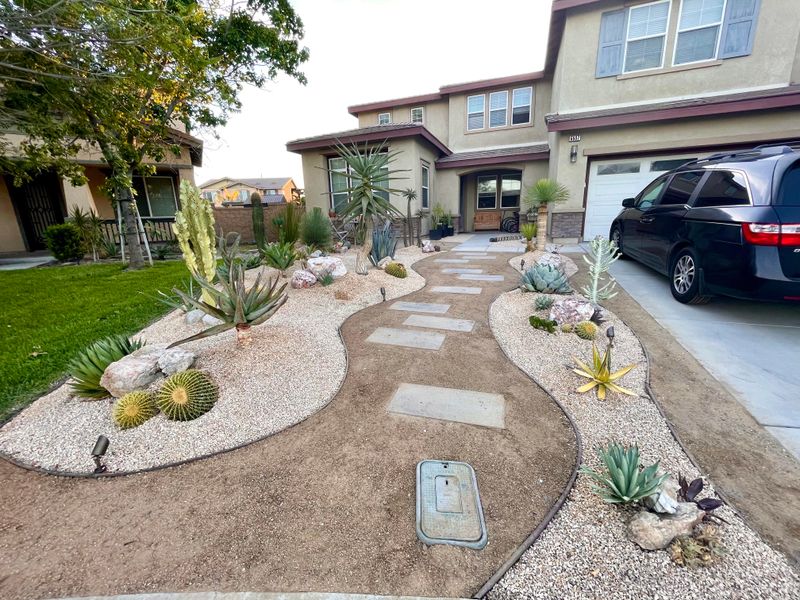
Smart water conservation meets high style in this Inman Park property. The owners removed their entire lawn, replacing it with a thoughtfully designed xeriscape featuring Georgia-friendly succulents and desert-adapted perennials.
River rock and decomposed granite create defined areas with varying textures. Solar-powered landscape lighting highlights architectural plants after sunset, creating dramatic shadows across the home’s facade. Despite Atlanta’s frequent rainfall, clever drainage solutions prevent water from pooling around these moisture-sensitive plants.
5. Saguaro-Inspired Landscape
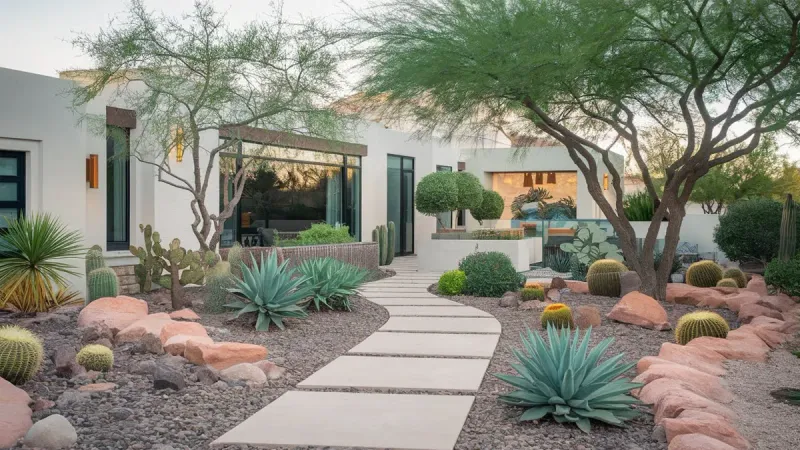
Native Georgian plants mingle with desert specimens in this Virginia Highland yard transformation. Instead of completely replacing local greenery, the homeowners created desert-inspired vignettes with strategic placement of agave, yucca, and ornamental grasses.
Crushed granite pathways wind through the yard, replacing water-hungry lawn areas. My favorite touch is the custom metal sculpture resembling a saguaro cactus that serves as both yard art and a rainwater collection system for irrigating the remaining garden beds.
6. Natural Stone Veneer
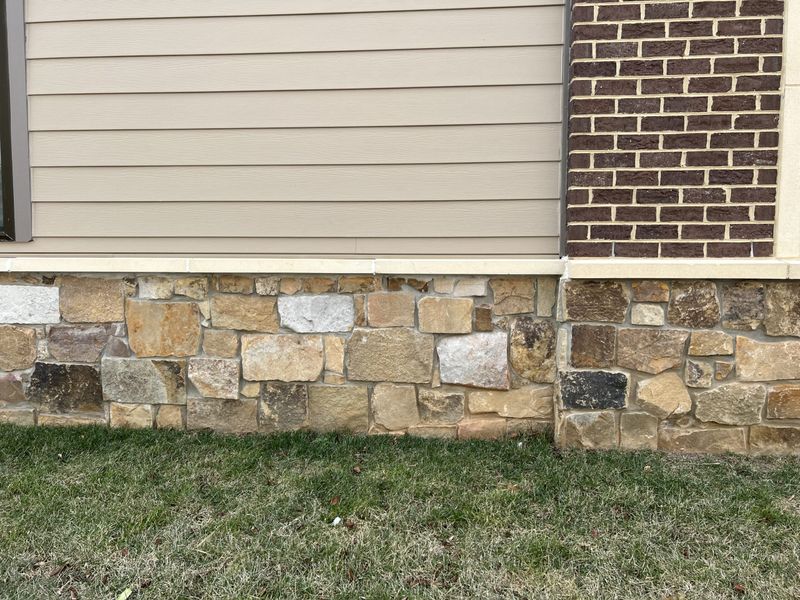
Stacked sandstone transforms this Brookhaven colonial into a desert-inspired retreat. The homeowners applied the veneer to the lower third of their home’s exterior, creating a natural foundation that anchors the structure to its surroundings.
They carried the same stone through hardscaping elements like retaining walls and planters. What really sells the desert aesthetic is their restrained approach – rather than covering the entire facade, the strategic partial application allows the home to maintain some of its original character while embracing southwestern influences.
7. Courtyard Entry Oasis

First impressions matter! This Grant Park bungalow created an enclosed front courtyard using stucco half-walls topped with decorative ironwork reminiscent of Southwestern gates.
Inside this intimate space, a small fountain provides gentle background sounds while container-planted desert specimens create a microclimate that feels transported from Arizona. Overhead, string lights crisscross the courtyard, casting a warm glow during evening gatherings. The courtyard design cleverly shields the main entrance from street view while creating an unexpected transition space.
8. Reclaimed Wood Accents
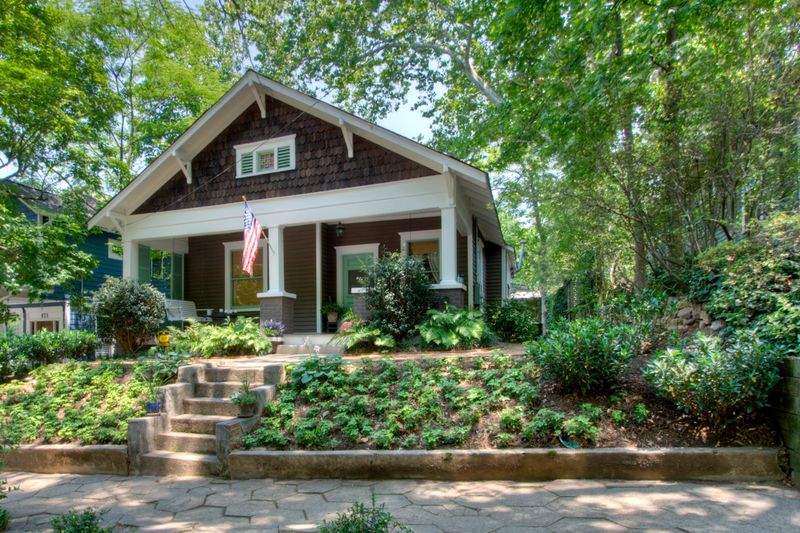
Weathered timber elements give this Candler Park craftsman undeniable desert character. The homeowners salvaged barn wood from a nearby demolished structure, repurposing it for shutters, pergolas, and decorative brackets under the roofline.
The wood’s silver-gray patina contrasts beautifully against their home’s sage green exterior. My favorite detail is the custom front door made from reclaimed mesquite wood – a nod to desert materials not typically found in Georgia. These authentic wood elements bring warmth and character that new materials simply can’t replicate.
9. Rammed Earth Inspired Texture
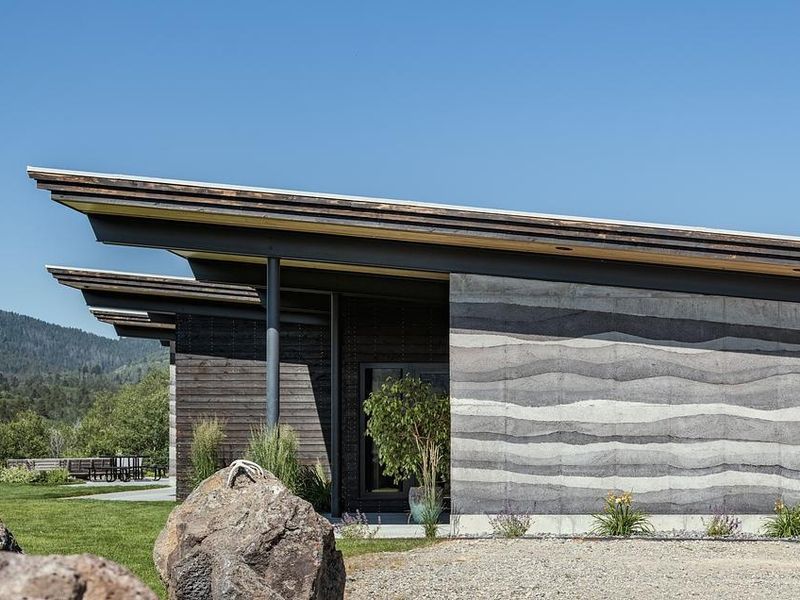
Genuine rammed earth construction isn’t practical in humid Atlanta, but this Old Fourth Ward renovation cleverly mimics the look. The homeowners applied specialized plaster techniques to create horizontal striations resembling sedimentary layers found in desert landscapes.
They enhanced the effect with subtle color variations in ochre, sand, and clay tones. Large picture windows with minimal frames cut through these textured walls, creating dramatic contrast. From the street, this transformed 1950s ranch now has the distinctive appearance of a contemporary desert dwelling while maintaining its original footprint.
10. Metal and Glass Pavilion
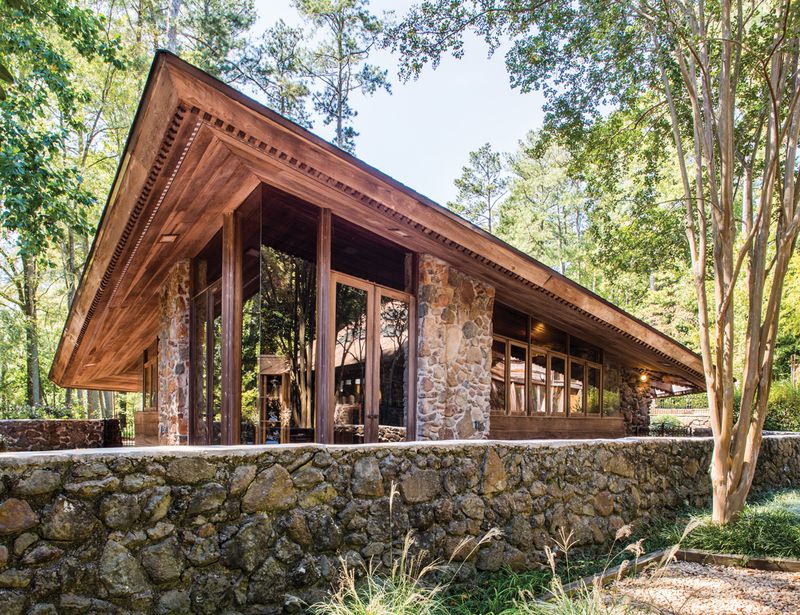
Floor-to-ceiling windows transform this Druid Hills extension into a desert-inspired glass pavilion. The homeowners added a modern addition to their traditional home, featuring slender steel framing and expansive glass walls that blur indoor-outdoor boundaries.
Overhead, a dramatic metal roof with deep overhangs provides essential shade during Georgia’s hot summers. The extension houses their dining area, surrounded by carefully placed boulders and desert plantings visible from every angle inside. This transparent living space creates the sensation of dining in the desert despite being in the heart of Atlanta.

